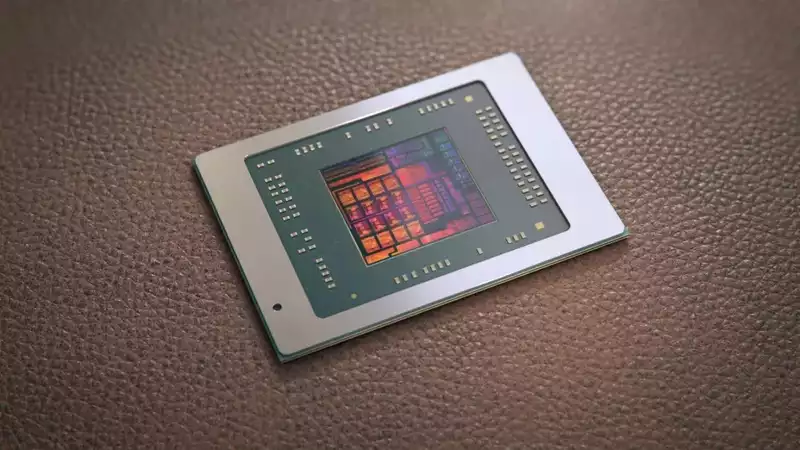It appears that AMD will soon follow Intel in offering hybrid processor designs with more than one CPU core, and according to Videocardz, AMD's excellent APU, which is found in laptops and handhelds like the Asus ROG Ally Images of a smaller version of the "Phoenix" have appeared. Rumor has it that this new "Phoenix 2" chip will feature multiple CPU core designs.
It is said to be significantly smaller than the existing Phoenix APU, shrinking from 178mm2 to 137mm2, and the Phoenix 2 will reportedly reduce from 12 graphics CUs to just 4 CUs. While disappointing in terms of gaming performance, it is the CPU side of the chip that is interesting.
On the Ryzen 7 7840U and Ryzen Z1 Extreme, Phoenix is offered in a full 8-core configuration. That is, eight full-fat Zen 4 cores. However, it is rumored that Phoenix 2 will be offered in two configurations: one with two Zen 4 cores and four Zen 4c cores, and one with two Zen 4 cores and two Zen 4c cores.
These Zen 4c cores are believed to be smaller and more efficient than the full Zen 4 core. However, as previously explained, AMD is taking a different approach than Intel with its efficient cores. [Intel's Efficient cores found in Alder Lake and Raptor Lake CPUs are dramatically smaller than the full performance cores. Roughly, four Intel Efficient cores can be squeezed into the same die space as one Performance core. In short, Intel's Efficient cores are based on very different architectures. Most obviously, there is no hyperthreading and only single threading can be processed per core.
In contrast, AMD's Zen 4c core is about half the size of a full Zen 4 core. In other words, the two Zen 4c cores fit on the same die space as the Zen 4 core. Functionally and architecturally, the Zen 4c is essentially the same as the Zen 4, with the same front end, scheduler, execution stages, instruction issue width, and the same L1 and L2 caches.
And unlike Intel's Efficient core, which is single-threaded, it supports two threads per core. The difference lies in two areas: the Zen 4c's transistor layout is tuned for slightly lower clock speeds, and the L3 cache has been halved to 2MB per core. Remarkably, this is enough to squeeze two Zen 4c cores into the space of a single Zen 4 core.
In most cases, the Zen 4c should offer the same performance per clock as the Zen 4. The only scenario where the Zen 4 would have an advantage would be in a scenario where the L3 cache is hit hard. Of course, as Jacob recently explained, gaming is only one such application, which is why AMD's own X3D CPUs with additional cache memory like the Ryzen 7 7800X3D exist.
As for clock speeds, rumors suggest that the maximum CPU clock will drop from 5.1 GHz on the Phoenix to 4.9 GHz on the Phoenix 2, which is not a particularly big hit. However, it is unclear whether this 4.9 GHz applies to both core types or only to the full core of the Zen 4.
Furthermore, it is equally unclear what approach AMD will take with its desktop CPUs when it comes to hybrid core designs; AMD's upcoming Zen 5 CPU, scheduled for release in 2024, has been rumored to move to a hybrid core. However, the latest rumors suggest that Zen 5 will in fact once again feature up to 16 cores based on a single full-performance architecture. [However, given AMD's approach with the Zen 4c and the fact that it did the same with the slightly cut-down Zen 2 core in the ultra-low-power Ryzen 7020 series Mendocino processor, if AMD moves to a hybrid on the desktop, its efficiency core design and performance is expected to be rather closer to a full fat core than to Intel's. Expect more on this in the future.


Comments